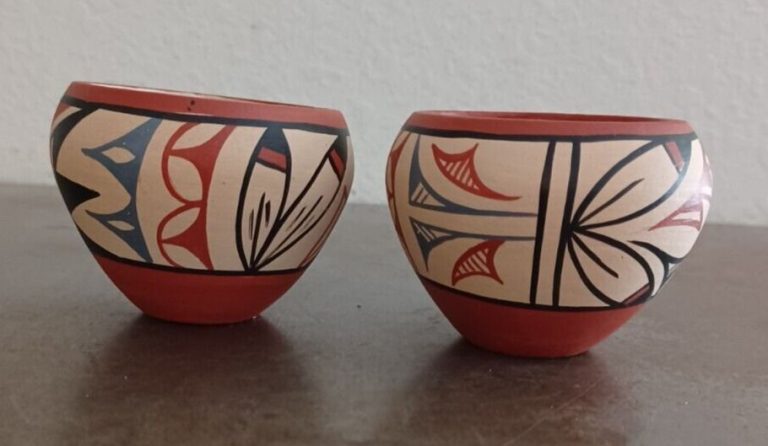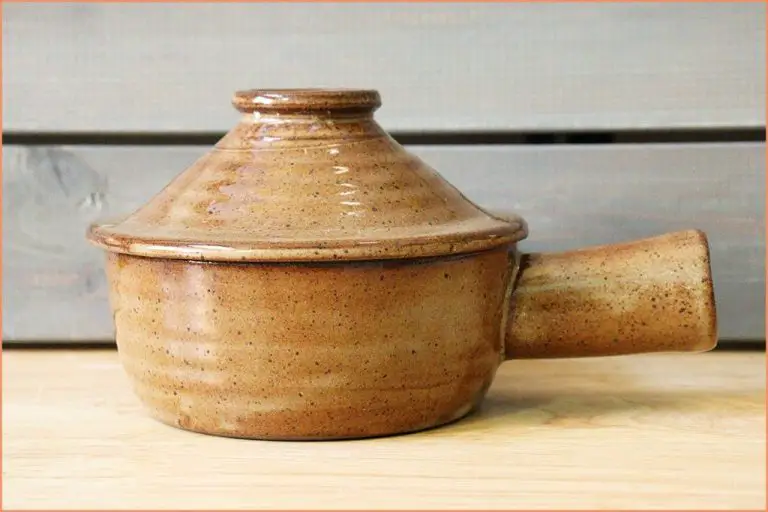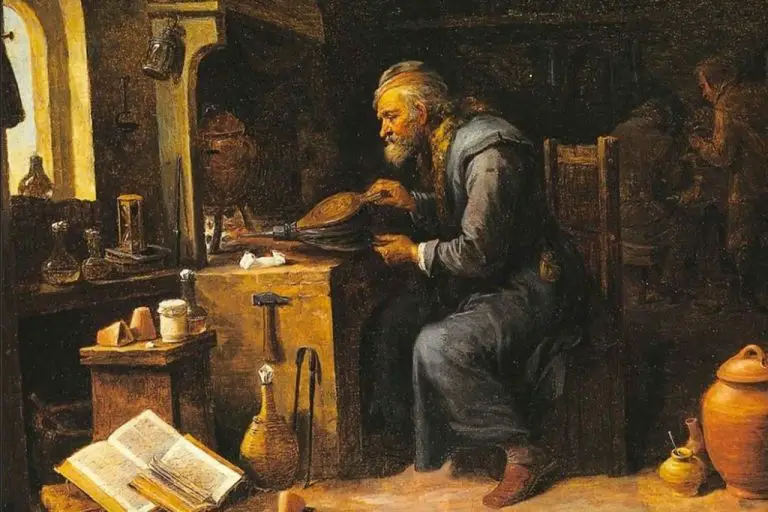What Is The Mark For Majolica?
Majolica refers to a specific type of glazed earthenware pottery that originated during the Renaissance in Italy. The term comes from the Spanish island of Mallorca which was an early production center of this type of pottery Majolica – Wikipedia. Majolica is characterized by an opaque white glaze applied to red clay and decorated with brightly colored overglaze designs and patterns Majolica Definition & Meaning – Merriam-Webster.
The distinctive look of majolica comes from applying a tin-glaze to the pottery before firing. This creates a white, glossy background well-suited for vivid designs. Common motifs include botanical themes, figural scenes, calligraphy and geometric patterns painted freely by hand. The richly decorated surface sets it apart from other utilitarian earthenwares of the period Majolica Pottery Description and History – The Spruce Crafts.
Majolica flourished as an art form during the Renaissance and Baroque eras in Italy, particularly in centers like Deruta and Faenza. It also spread to other areas across Europe including France, Germany, Netherlands and Spain. The 19th century saw a revival of majolica techniques by Minton and other potteries Majolica – Wikipedia. While less common today, majolica remains a collectible art form with a rich history.
Majolica Techniques
Majolica refers to tin-glazed earthenware, a technique which originated in 9th century Mesopotamia and became popular in Italy during the Renaissance. The majolica technique involves covering a ceramic body with an opaque, white glaze made with tin oxide. This creates a smooth, durable surface ideal for decoration.[1]
The majolica ceramic body is first fired to bisque temperature before being dipped in the tin glaze. The glaze melts and fuses with the clay body in a glost firing at around 1470°F. Majolica glazes contain tin oxide, lead oxide, quartz, and sodium oxide. The lead oxide gives the glaze its glossy finish.[2]
After firing, the glossy white glazed surface is hand-painted using metallic oxide pigments. Common colors include blue, yellow, green, purple, and orange. The artist paints directly on the unfired glaze using a brush. The colors intensify as the glaze melts in firing. Decoration styles range from Moorish, Renaissance grotesque, istoriato narrative scenes, to botanical motifs.
Notable majolica styles include Italian Renaissance istoriato chargers, 19th century Victorian majolica with floral patterns, Hispano-Moresque lusterware from Spain, and Portuguese faience. The distinctive opaque white glaze and vibrant colors make majolica a favorite among collectors.
Notable Majolica Artists and Workshops
Majolica originated as a type of earthenware produced in the Middle Ages in Spain and Italy. By the Renaissance, majolica production flourished and major workshops and artists emerged across Europe. Some of the key production centers and artisans included:
Italy – Majolica began on the Italian island of Mallorca, hence the name. Italian majolica from the Renaissance is known for its vivid colors and elaborate decorative designs. Major production centers included Florence, Siena, Faenza, and Deruta. Famous Italian majolica artists included Guido Durantino and Nicola da Urbino.
Spain – Spanish majolica is known as Hispano-Moresque ware and originated in Valencia in the 13th century. The style combined Islamic and Italian techniques and motifs. Production later expanded to Manises near Valencia. Key Spanish majolica artists included Francisco Niculoso Pisano.
France – French majolica was made primarily in Lyon, Rouen, and Moustiers. The brightly colored faience style often featured naturalistic floral designs. Notable French majolica artists were Bernard Palissy and Pierre Courteys.
Netherlands – Prominent Dutch majolica came from Delft where the distinctive blue and white tin-glazed Delftware originated in the 17th century. Pieter van Eenhoorn van Alburch worked in the early Delft majolica style.
England – English majolica is often referred to as Delftware as it copied the Dutch style. Key English majolica production came from London, Liverpool, and Bristol. Thomas Craft was an innovative 18th century English Delftware artist.
Renaissance and Baroque Majolica
Majolica reached the peak of its popularity and artistic development during the Renaissance and Baroque periods in Italy. The 15th and 16th centuries saw majolica produced in central and northern Italian cities like Faenza, Urbino, Gubbio, and Deruta.1
Popular motifs included coats of arms, historical and mythological scenes, plant and animal life, and geometric patterns. The styles reflected the influence of Humanism and the revival of classical culture. Scenes were painted in vibrant colors and often had fine details. Major patrons and commissions came from noble families like the House of Este and the Medicis as well as the Catholic Church. For example, majolica was produced for Pope Leo X in Urbino.

In the 17th century, the Baroque style emerged in majolica with more exuberant, expressive, and naturalistic designs. The shapes of vessels also became more ornate and experimental during this time.
19th Century Revival
Majolica experienced a revival in the Victorian era in Britain and Europe from around 1850 to 1900. Victorian majolica refers to the mass-produced colorful lead-glazed earthenware that became popular as ornamental housewares and tableware.
The Victorian revival of majolica was influenced by increasing interest in the Renaissance period as well as archaeological discoveries revealing ancient Roman pottery techniques. Majolica fit well with the elaborate Victorian aesthetic and demand grew rapidly.
Some leading Victorian majolica manufacturers included Mintons in England, Boch Frères in Belgium, and Gien in France. British potteries were especially known for developing bright new lead glazes and incorporating designs trends of the era like Japonism. The vibrancy and affordability of Victorian majolica made it a staple of middle class households.
According to JSTOR, the mass production of majolica eventually led to a decline in quality and originality. By the end of the 1800s, the Arts and Crafts movement shifted tastes away from heavy ornamentation back toward simpler, handcrafted ceramics. Still, Victorian majolica left a lasting impact and remains collectible today.
Arts and Crafts Majolica
The Arts and Crafts movement of the late 19th and early 20th centuries helped revive interest in majolica in Europe and North America. Key figures like William Morris emphasized high-quality artisanal craftsmanship and a return to pre-industrial techniques and aesthetics.
Some of the most prominent Arts and Crafts majolica makers included Minton, Wedgwood, Pilkington, and George Jones in England, as well as Rookwood Pottery, Grueby Faience Company, and Teco Pottery in the United States.
Arts and Crafts majolica often featured earthy colors like mustard yellow, sage green, terra cotta, and blue. Decorative motifs drew inspiration from Medieval, Gothic, and Renaissance styles, as well as natural forms like flowers, vines, leaves, and birds. The glazes tended to be matte rather than glossy.
Overall, Arts and Crafts majolica aimed to bring handcrafted beauty to everyday objects for the home, from vases and lamps to tiles and dinnerware. The majolica revival allowed potters to elevate utilitarian wares into artworks that embodied the ideals of the Arts and Crafts movement.
Majolica Marks
Majolica makers often incorporated various marks, signatures, and symbols on their pottery to identify the manufacturer and date of production. These marks provide important clues for authenticating and dating majolica pieces.
Some of the main marks to look for include the manufacturer’s name, the factory location, trademarks, registration diamonds indicating design patents, pattern numbers, date cyphers, artist signatures or initials, and symbols like crowns or coats of arms. Makers like Minton, Wedgwood, and George Jones clearly signed the underside of most majolica wares [1]. Registration diamonds were commonly used after 1842 when the Patent Office registry system started [2]. Date cyphers help narrow down the year of production.
However, marks can also be forged. It takes experience to distinguish authentic marks from fakes. Specialist books on majolica marks provide photographic examples for comparison. Experts also examine the style, materials and techniques to determine if the marks match the period of the majolica piece.
Notable Majolica Collections
Some of the most impressive majolica collections can be found in major museums and institutions around the world. The Walters Art Museum in Baltimore houses over 1,600 pieces of majolica spanning the 15th to 19th centuries, considered one of the largest and most significant public collections in the United States (https://thewalters.org/exhibitions/majolica/). Their collection features Italian, French, Dutch, English and American majolica showcasing the full breadth and evolution of the art form.
The Metropolitan Museum of Art in New York City holds over 1,000 pieces of Italian majolica dating from the 15th century to the present. Highlights include istoriato wares, or narrative plates depicting biblical and mythological scenes, as well as Renaissance drug jars decorated with coats of arms (https://www.metmuseum.org/art/collection/search#!?material=Majolica&showOnly=withImage&sortBy=Relevance&sortOrder=asc&offset=0&perPage=0).
Other leading collections are housed at the Victoria & Albert Museum in London, the Hermitage Museum in St. Petersburg, and the Palazzo Pubblico in Siena, Italy. The breadth and quality of majolica in these museum collections reflect the important history and artistic merit of the medium.
Majolica Identification and Authentication
Determining the age and origin of majolica pieces can be challenging due to the variety of techniques and styles used over the centuries. However, there are some key factors to look for when identifying and authenticating majolica:
One of the most important clues is the maker’s mark, usually found on the bottom of a piece. Majolica workshops each had their own distinctive mark, consisting of initials, names, or symbols. Comparing marks to reference guides can help date and attribute majolica to known artists and production centers like Deruta, Faenza, or Montelupo. Some important marks to recognize include the Montefiascone grape cluster, Urbino ducal arms, Ginori mark, and Capodimonte crowned N.
The style and subject matter of decorative motifs can also offer clues. Renaissance majolica often featured istoriato narrative scenes, while Baroque examples display more fantastical grotesque themes. Later 19th century majolica revived classically inspired designs. Understanding stylistic trends helps place pieces in their proper historic context.
In addition to marks and decoration, the clay body provides important evidence. Renaissance majolica has a fine textured clay with transparent glaze pooling in crevices. Some later productions used more opaque glazes over smoother clay. Examining material qualities alongside other indicators assists in determining age and workshop origin.
Size, form, glaze texture and coloration must be accounted for as well, since techniques evolved over time. For example, 15th century maiolica has a distinctive metallic ruby luster glaze not replicated in later eras. Comparative study of all aspects is needed for accurate authentication.
While the mark provides critical information, beware of forged or misleading marks on majolica copies and reproductions. Always verify with multiple other indicators like style and material. Experts can conduct thermoluminescence tests to date the clay, examining its mineral composition under ultraviolet light. This scientific analysis paired with connoisseurship skills gives the best outcome for identifying authentic majolica pieces.
Sources:
[1] https://frenchgardenhouse.com/2019/06/05/say-hello-to-authentic-majolica/
Majolica Market and Collecting
Majolica has seen a resurgence in popularity among collectors in recent years. According to the Adirondack Girl at Heart, “the vibrant colors and whimsical designs of majolica appeal to many antique collectors today.”
Prices at auction have reflected this increased interest. A rare Minton majolica game pie dish sold for $24,000 at a 2016 auction, far above its estimate of $8,000-12,000 [1]. More common pieces can sell for several hundred dollars, while rarer pieces by acclaimed makers can fetch thousands.
When collecting majolica, be sure to inspect pieces carefully for condition issues like crazing, restoration, and damage. Subtle variations in the design and glaze can also significantly impact value. Research makers’ marks and consult references to authenticate pieces.
Focusing one’s collection on a particular style, workshop, or time period can yield a cohesive and meaningful assemblage. Mixing different motifs and palettes, however, allows the vibrant diversity of majolica to shine through. Whether collecting broadly or selectively, majolica’s exuberant designs and rich history offer much to appreciate.





